FASHION
Elegant Clocks with Roman Numerals for Timeless Décor
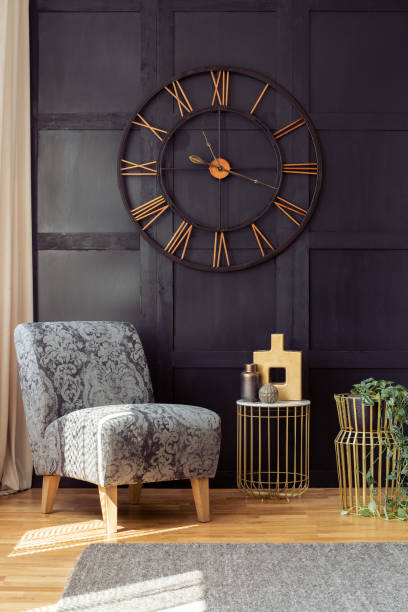
Clocks are more than time-telling devices; they are decorative accents that enhance any living or working space. Among the many styles of clocks, those featuring Roman numerals stand out for their timeless charm and historical significance. Roman numeral clocks bring a touch of sophistication, making them a popular choice for homes, offices, and even public spaces. Whether you prefer a large wall clock, a classic mantelpiece design, or a modern twist on a traditional look, these pieces can elevate your décor effortlessly.
In this article, we will explore the origins of Roman numeral clocks, why they remain so appealing, different types available, styling tips, buying considerations, and maintenance guidelines.
History of Roman Numerals on Clocks
Roman numerals have been used since ancient times, originating in the Roman Empire as a standard numbering system. When mechanical clocks were introduced in Europe during the Middle Ages, clockmakers adopted Roman numerals for their dials. This tradition continued for centuries and remains iconic in clock design today.
One interesting historical note is the representation of the number four. On most Roman numeral clocks, you will notice “IIII” instead of “IV”. This is a stylistic and symmetrical choice that dates back to early horology practices. The uniformity of having more symbols with the same number of characters enhances visual balance on the clock face.
Why Choose a Clock with Roman Numerals?
-
Classic Aesthetic Appeal
Roman numeral clocks offer elegance that complements both traditional and contemporary interiors. Their bold numerals add character to any room. -
Timeless Symbolism
Roman numerals carry historical value, giving the clock a sense of heritage and sophistication. -
Versatility in Design
These clocks come in various materials like wood, metal, and glass, fitting into rustic, vintage, or modern spaces. -
Readable and Distinctive
The bold, elongated numeral style is easy to read and instantly recognizable, making it a practical yet stylish option.
Types of Clocks with Roman Numerals
Roman numeral clocks are available in different sizes, shapes, and designs. Here are some of the most popular categories:
1. Wall Clocks
Large wall clocks with Roman numerals serve as statement pieces. They often feature metal frames, open faces, and rustic finishes. Perfect for living rooms, dining areas, or entryways, these clocks create a focal point while providing functionality.
2. Mantel Clocks
Compact and elegant, mantel clocks are ideal for bedrooms, offices, or study areas. They bring an old-world charm to shelves and desks.
3. Grandfather Clocks
These traditional, tall-standing clocks typically include Roman numeral faces and pendulums. They are excellent for classic or vintage-inspired interiors.
4. Modern Minimalist Clocks
Designers have adapted Roman numerals into sleek, minimalist formats for contemporary homes. These versions may use metallic accents, glass surfaces, and simple frames to keep the look sophisticated yet modern.
5. Outdoor Clocks
Garden or patio clocks often feature weather-resistant materials and bold Roman numerals for easy readability. They add elegance to outdoor décor.
Materials and Finishes
Choosing the right material and finish ensures the clock complements your interior design:
-
Wood: Ideal for rustic or traditional settings, wooden clocks offer warmth and charm.
-
Metal: Sleek and durable, metal-framed clocks suit industrial or modern aesthetics.
-
Glass: Perfect for a minimalist look, glass adds a contemporary touch.
-
Vintage Finishes: Antiqued brass or distressed wood finishes create a nostalgic vibe.
Styling Tips for Roman Numeral Clocks
-
Create a Focal Point
Position a large Roman numeral clock above a mantelpiece, sofa, or dining table for maximum impact. -
Match the Theme
Choose finishes that complement your décor. For instance, a distressed wood clock for a farmhouse-style home or a sleek metal frame for modern interiors. -
Balance with Wall Art
Pair your clock with complementary art pieces or decorative elements to create visual harmony. -
Consider Scale
For small rooms, opt for medium-sized clocks. In larger spaces, oversized Roman numeral clocks make a bold statement.
Buying Guide for Roman Numeral Clocks
When selecting a clock, keep the following factors in mind:
-
Size: Measure the wall or space where the clock will be placed.
-
Style: Choose a design that blends with your existing décor.
-
Material Quality: Ensure durability by selecting high-quality wood, metal, or glass.
-
Movement Type: Clocks may feature quartz movement for precision or mechanical options for traditional enthusiasts.
-
Readability: Make sure the numerals are clearly visible from a distance.
Maintenance and Care Tips
To ensure your Roman numeral clock lasts for years:
-
Dust Regularly: Use a soft cloth to keep the surface clean.
-
Avoid Moisture: Keep the clock away from humid areas unless it’s designed for outdoor use.
-
Check Mechanism: Replace batteries as needed for quartz clocks and maintain pendulums for mechanical ones.
-
Handle with Care: When moving the clock, support its frame to avoid damage.
Roman Numeral Clocks in Different Settings
-
Living Room: A large wall clock can serve as a statement piece.
-
Bedroom: Compact mantel clocks provide elegance without overwhelming the space.
-
Office: Minimalist metal clocks create a professional, stylish look.
-
Outdoor Spaces: Weather-resistant Roman numeral clocks add charm to gardens or patios.
Modern Trends in Roman Numeral Clocks
Today’s designs blend tradition with innovation. Some trending features include:
-
Oversized Wall Clocks: Popular in open-plan homes and lofts.
-
Skeleton Clocks: Open-face designs showcasing gears for an industrial feel.
-
Mixed Materials: Combinations like wood and metal for a unique aesthetic.
-
Silent Sweep Mechanisms: Ideal for bedrooms and offices to eliminate ticking sounds.
Conclusion
A clock with Roman numerals is more than just a way to tell time—it is a timeless work of art that embodies elegance, tradition, and sophistication. Unlike ordinary timepieces, Roman numeral clocks carry a sense of history that instantly adds character to any space. Their classic design has endured for centuries, making them a popular choice for homeowners and decorators who want to blend functionality with style.
From rustic wooden wall clocks to sleek contemporary metal designs, Roman numeral clocks are available in a wide variety of styles to match different tastes. A rustic wooden piece can bring warmth and charm to a traditional living room or farmhouse-inspired kitchen, while a modern glass or metallic design adds a bold and refined touch to minimalist interiors. For those who prefer a statement piece, a grand and majestic grandfather clock with Roman numerals can become the focal point of an entire room.
Material choice also plays an important role in the overall appeal. Wood offers a cozy, vintage feel, while metal and glass create a more modern aesthetic. Some clocks combine multiple materials for a unique, balanced look that complements both classic and contemporary décor.
Placement is equally important when selecting the right Roman numeral clock. A large wall clock above the fireplace can anchor a living room, while a smaller design may suit a bedroom, hallway, or study. Grandfather clocks, with their commanding presence, are best suited for spacious areas where they can stand tall without being overshadowed.
Ultimately, a Roman numeral clock is more than a timekeeping device—it is a reflection of your personality and style. By carefully choosing the right design, material, and placement, you can enhance your home with a timeless accessory that blends tradition with elegance.
FASHION
Shop Fourth of July T Shirts: The Ultimate Guide for Patriotic Style
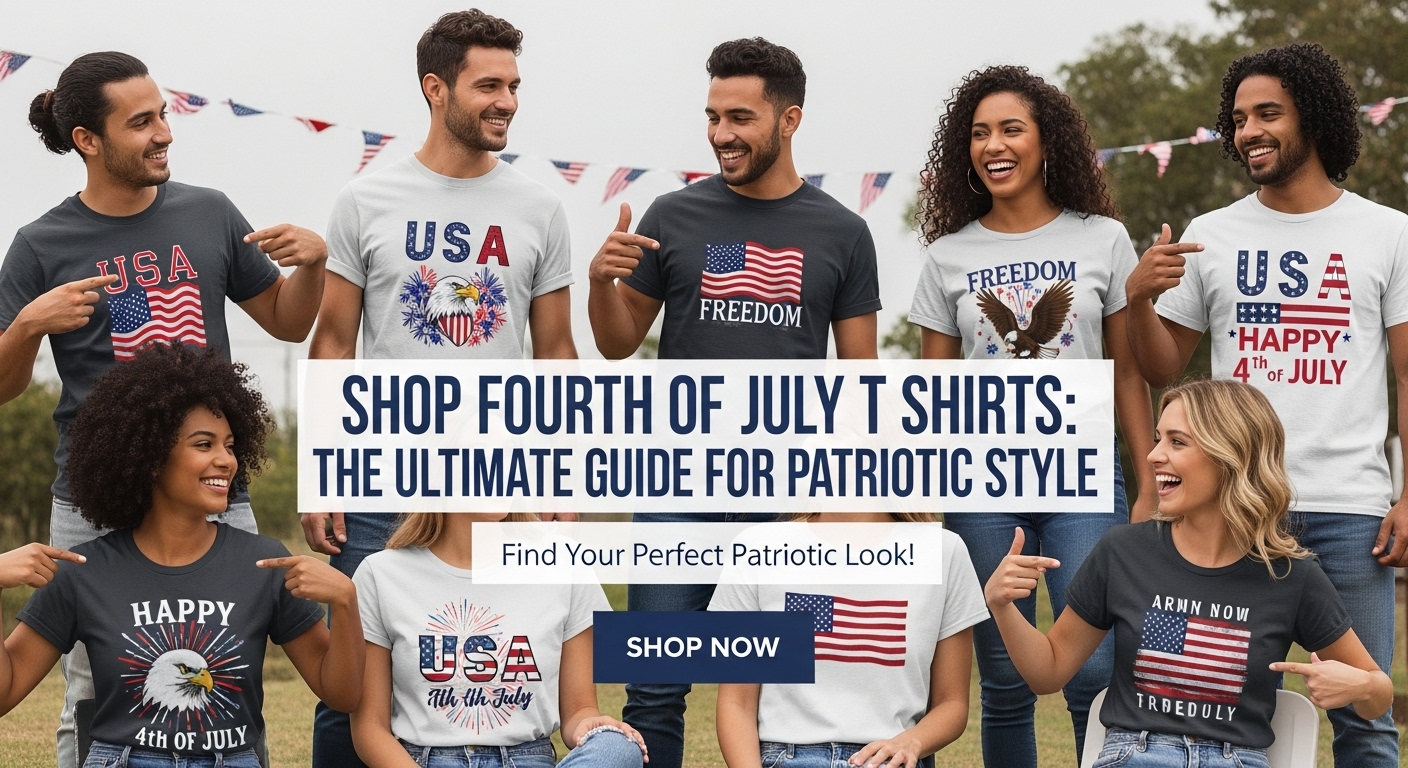
Independence Day is about celebration, unity, and of course, festive fashion. If you’re planning your outfit for the holiday, the easiest way to show your patriotic spirit is to shop Fourth of July T shirts. With bold graphics, comfortable fabrics, and countless styling options, these shirts have become a modern staple of July Fourth festivities. This comprehensive guide explores why they’re so popular, what to look for, and how to style them for maximum impact.
Why It’s Worth It to Shop Fourth of July T Shirts
The Growing Tradition of Holiday Apparel
Wearing themed apparel during holidays is more than just a trend; it’s a way to participate in shared culture. Fourth of July T shirts reflect the spirit of freedom and community.
Benefits of Themed Apparel
-
Instant way to feel festive and connected.
-
Easy to coordinate for family photos or group events.
-
Affordable compared to full costumes.
-
Available in a variety of fits and fabrics.
Types of Fourth of July T Shirts to Consider
Classic Flag Prints
Shirts featuring the American flag or its colors—red, white, and blue—are timeless and instantly recognizable.
Vintage-Inspired Graphics
Retro designs add a nostalgic twist, pairing perfectly with denim shorts or classic sneakers.
Humorous and Pop Culture Themes
From playful puns to pop culture mash-ups, these T shirts let you showcase personality alongside patriotism.
Sustainable and Eco-Friendly Options
Eco-conscious consumers can find shirts made from organic cotton or recycled fabrics.
How to Choose the Best Fourth of July T Shirts
Fabric and Comfort
Look for breathable, soft fabrics like 100% cotton or cotton blends to stay cool during outdoor events.
Fit and Style
Options include:
-
Crew neck vs. V-neck
-
Slim fit vs. relaxed fit
-
Cropped or oversized cuts for modern styling
Print Quality
High-quality screen printing or sublimation ensures designs last beyond one holiday.
Styling Tips After You Shop Fourth of July T Shirts
Casual Daytime Look
Pair with denim shorts, white sneakers, and a baseball cap.
Evening Fireworks Outfit
Layer with a light jacket or hoodie and accessorize with glow sticks or LED jewelry.
Family Photo Coordination
Choose a theme—like all-flag prints or coordinated colors—to unify the group.
Accessories to Complement Your Shirt
-
Patriotic bandanas
-
Red, white, and blue sunglasses
-
Star-spangled tote bags
Budget-Friendly Ways to Shop Fourth of July T Shirts
-
Seasonal Sales: Most retailers offer discounts in late June.
-
Online Marketplaces: Check Etsy or Amazon for handmade or bulk options.
-
DIY Customization: Buy blank shirts and use fabric paint or iron-on transfers.
-
Group Orders: Many print shops offer discounts for bulk purchases.
Challenges When Buying Fourth of July T Shirts
Sizing Variability
Different brands may have inconsistent sizing charts. Always measure before purchasing.
Stock Shortages
Popular designs sell out fast in late June. Shopping early ensures better options.
Quality Concerns
Low-cost prints can fade quickly. Read reviews to gauge product longevity.
Long-Tail Keyword Variations
-
“Best Fourth of July graphic tees”
-
“Affordable patriotic T shirts for Independence Day”
-
“How to style Fourth of July T shirts”
Spotlight: Where to Shop Fourth of July T Shirts
Major Retailers
Big-box stores like Target, Walmart, and Old Navy offer wide selections of patriotic shirts.
Boutiques and Independent Designers
Support small businesses by shopping handmade or custom designs on Etsy or local craft markets.
Online Custom Print Shops
Websites like Teespring or Zazzle allow you to upload your own artwork for a personalized shirt.
Looking Ahead: Trends in Fourth of July Fashion
Holiday apparel continues to evolve. Here’s what’s coming:
-
Eco-Friendly Focus: Expect more brands to offer organic fabrics and water-based inks.
-
Inclusive Sizing: Extended size ranges to fit all body types.
-
Interactive Prints: Glow-in-the-dark or heat-reactive designs for fireworks shows.
-
Matching Sets: Coordinated family or couple outfits to make group photos pop.
As fashion becomes more personal, the Fourth of July T shirt will remain a canvas for expression, blending tradition with innovation.
FAQ: Shop Fourth of July T Shirts
1. When is the best time to shop Fourth of July T shirts?
Late May to mid-June is ideal—stock is plentiful, and you can snag early-bird discounts.
2. Are there sustainable options for patriotic T shirts?
Yes. Many brands now offer organic cotton or recycled-material shirts for eco-conscious shoppers.
3. How should I style a Fourth of July T shirt for a party?
Pair with denim shorts or a skirt, comfortable sandals, and festive accessories like bandanas or patriotic earrings.
4. Can I customize my own Fourth of July shirt?
Absolutely. Use online print shops or DIY methods like fabric paint, iron-ons, or tie-dye.
5. Are Fourth of July T shirts just for adults?
No. You’ll find options for children, infants, and even pets—perfect for coordinated family looks.
Conclusion
To sum up, when you shop Fourth of July T shirts, you’re investing in more than just clothing—you’re embracing a tradition that celebrates unity, freedom, and fun. From classic flag prints to eco-friendly fabrics and custom designs, there’s a perfect shirt for every style and budget.
Whether you’re planning a backyard barbecue, attending a parade, or capturing family photos, these shirts offer a versatile and affordable way to celebrate Independence Day in style. Start shopping early, explore new trends, and let your patriotic spirit shine this Fourth of July.
FASHION
Women’s Light Pink Earrings for a Royal Ball: The Ultimate Guide
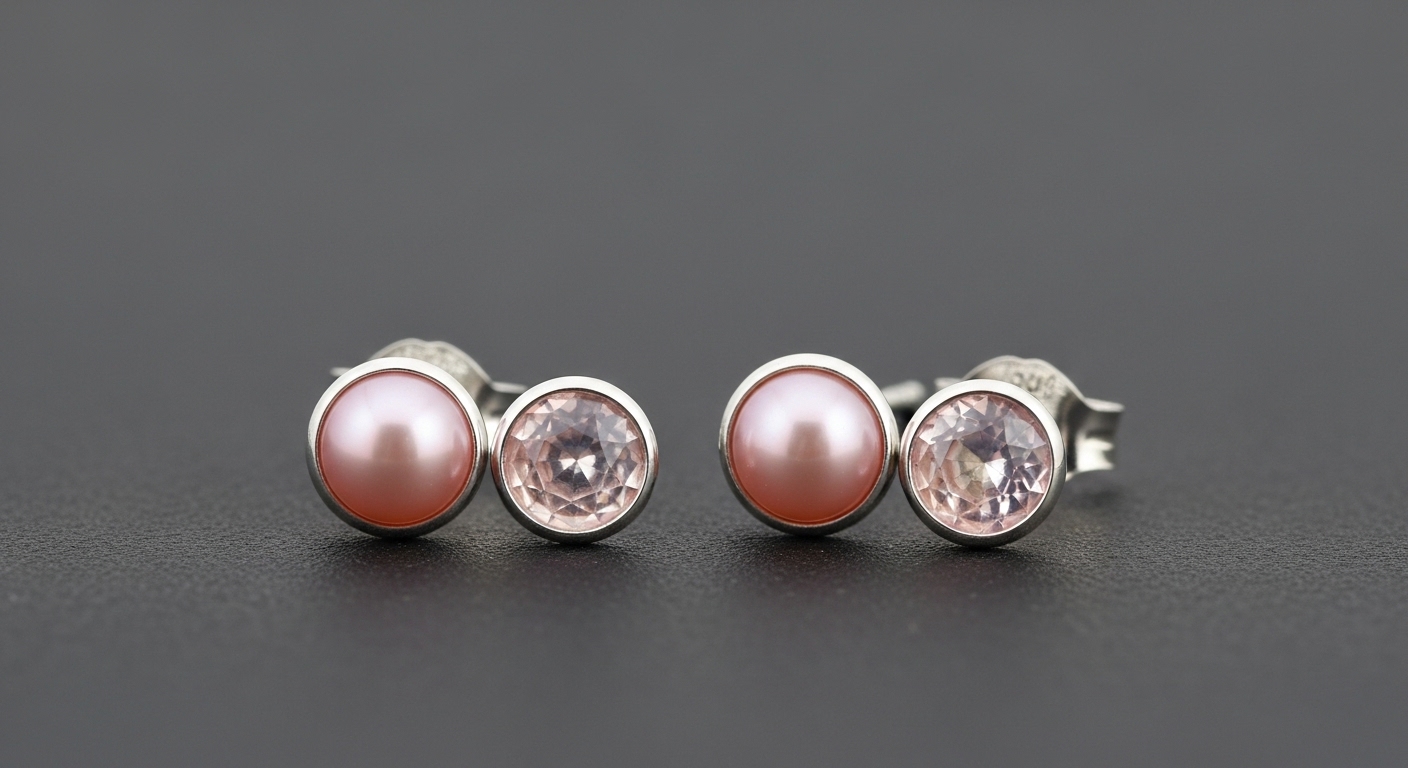
When it comes to making a statement at an upscale event, accessories can elevate your entire outfit. Among the most enchanting accessories are women’s light pink earrings for a royal ball, which combine sophistication, grace, and a touch of fairy-tale magic. Whether you’re attending a charity gala, a themed celebration, or an actual regal gathering, understanding how to select and style these earrings is essential. This guide explores their history, styles, benefits, challenges, and how to wear them with confidence.
Understanding Women’s Light Pink Earrings for a Royal Ball
What Makes Them Unique
Light pink symbolizes romance, femininity, and soft elegance. In jewelry, it adds a subtle pop of color without overpowering the ensemble. For formal events like royal balls, these earrings often feature luxurious materials such as rose quartz, pink sapphires, or pink enamel with diamonds.
Why Color Matters
-
Elegance: Soft pink complements a variety of gown colors.
-
Timelessness: Pastel shades remain on trend for decades.
-
Versatility: Pairs well with silver, platinum, and rose-gold settings.
Styles of Women’s Light Pink Earrings for a Royal Ball
1. Stud Earrings
Perfect for understated elegance. Small pink gemstone studs or pearl accents create a refined, timeless look.
2. Drop Earrings
Offer movement and sparkle. Long, slender drops with pink crystals or gemstones add glamour.
3. Chandelier Earrings
Make a bold statement. These intricate designs with cascading pink stones reflect opulence suited for a royal ball.
4. Ear Climbers and Cuffs
Modern yet regal. Pink stones arranged along the ear give a contemporary twist to classic jewelry styling.
How to Select the Perfect Pair
Match with Your Outfit
-
Neutral Dresses: Soft pink earrings add gentle color.
-
Pastel Dresses: Create a monochromatic effect.
-
Bold Colors: Provide contrast without clashing.
Consider Your Face Shape
-
Round Faces: Choose elongated drop or chandelier styles.
-
Oval Faces: Almost all earring styles suit you.
-
Square Faces: Round or oval earrings soften angles.
Balance with Other Accessories
If your necklace is bold, choose subtle earrings, and vice versa. Harmony in jewelry ensures sophistication.
Benefits of Wearing Women’s Light Pink Earrings for a Royal Ball
-
Adds a Romantic Touch: Enhances the softness of your evening gown.
-
Complements Royal Themes: Pink symbolizes grace and charm.
-
Photogenic: Reflects light beautifully for photographs.
-
Versatility: Works beyond the royal ball for weddings, galas, and formal dinners.
Challenges When Choosing These Earrings
Finding Quality Materials
High-end pink gemstones or precious metals can be costly. Always verify authenticity.
Comfort and Weight
Chandelier earrings may be heavy. Look for lightweight alloys or hollow designs.
Coordination
It can be tricky to match pink shades with certain dress colors. Consider trying earrings with a hint of neutral stones like diamonds or pearls to blend better.
Practical Examples: Styling Women’s Light Pink Earrings for a Royal Ball
-
Classic Look: Pair rose quartz studs with a cream satin gown and pearl clutch.
-
Modern Royalty: Pink sapphire ear climbers with a minimalist off-shoulder dress.
-
Vintage Flair: Pink chandelier earrings with a lace gown and tiara.
Long-Tail Variations for SEO
-
“Best earrings to wear at a royal ball”
-
“Styling pastel pink jewelry for formal events”
-
“Choosing feminine accessories for gala nights”
Tips for Coordinating with Other Jewelry
-
Necklaces: If you wear an elaborate necklace, keep earrings simple.
-
Bracelets: Rose-gold bangles echo the warmth of pink stones.
-
Hair Accessories: Sparkling hairpins or tiaras should match your earrings’ metal tone.
-
Makeup: Soft pink blush and nude lipstick complement light pink earrings beautifully.
Maintaining and Caring for Your Earrings
-
Storage: Keep in a soft pouch to prevent scratches.
-
Cleaning: Use a mild soap solution and soft brush.
-
Regular Inspection: Check clasps and stones before big events.
-
Professional Cleaning: Once a year for fine jewelry.
Cultural Significance of Pink in Jewelry
Across different cultures, pink is associated with love, kindness, and prosperity. Wearing pink earrings at a royal event may subtly communicate approachability and warmth, making them an ideal choice for social occasions.
Budget-Friendly Alternatives
Not every royal-style accessory needs to break the bank. Affordable options include:
-
Swarovski Crystals: Offer sparkle at a fraction of the cost.
-
Rose-Gold Plated Metals: Mimic expensive settings.
-
Glass Beads or Resin: Lightweight and colorful for statement designs.
Looking Ahead: Trends in Women’s Light Pink Earrings for a Royal Ball
Jewelry trends evolve but some key movements are emerging:
-
Sustainable Jewelry: Ethically sourced stones and recycled metals are increasingly popular.
-
Convertible Earrings: Pieces that switch from studs to drops for versatility.
-
Customization: Initials or bespoke engravings add uniqueness.
-
Tech-Enhanced Jewelry: Smart earrings with built-in sensors for health or security features.
As the line between tradition and innovation blurs, expect women’s light pink earrings for a royal ball to become more versatile, sustainable, and personalized.
FAQ: Women’s Light Pink Earrings for a Royal Ball
1. What outfits pair best with light pink earrings for a royal ball?
Neutral, pastel, or jewel-toned gowns all work well. Pink earrings especially complement cream, navy, and metallic fabrics.
2. Are women’s light pink earrings for a royal ball suitable for other occasions?
Yes. They’re versatile enough for weddings, black-tie galas, and elegant dinners.
3. How do I choose between studs and chandelier styles?
Consider your face shape, dress neckline, and desired impact. Studs are understated; chandeliers are dramatic.
4. What metals work best with pink stones?
Rose gold, platinum, and white gold enhance the pink hue and offer timeless appeal.
5. How do I maintain the sparkle of my earrings?
Regular gentle cleaning, proper storage, and periodic professional check-ups help preserve their beauty.
Conclusion
Women’s light pink earrings for a royal ball are more than just accessories—they’re statements of elegance, confidence, and timeless style. By understanding their history, styles, benefits, and maintenance needs, you can select the perfect pair to complement your outfit and the grandeur of the occasion.
As jewelry trends lean toward sustainability and personalization, investing in pieces that resonate with your style ensures they remain relevant for years to come. Whether you’re stepping into a palace ballroom or attending a high-end charity event, the right earrings will help you sparkle under the chandeliers and leave a lasting impression.
ENTERTAINMENT
Taylor Swift Crochet Dress: A Fashion Icon’s Handmade Style
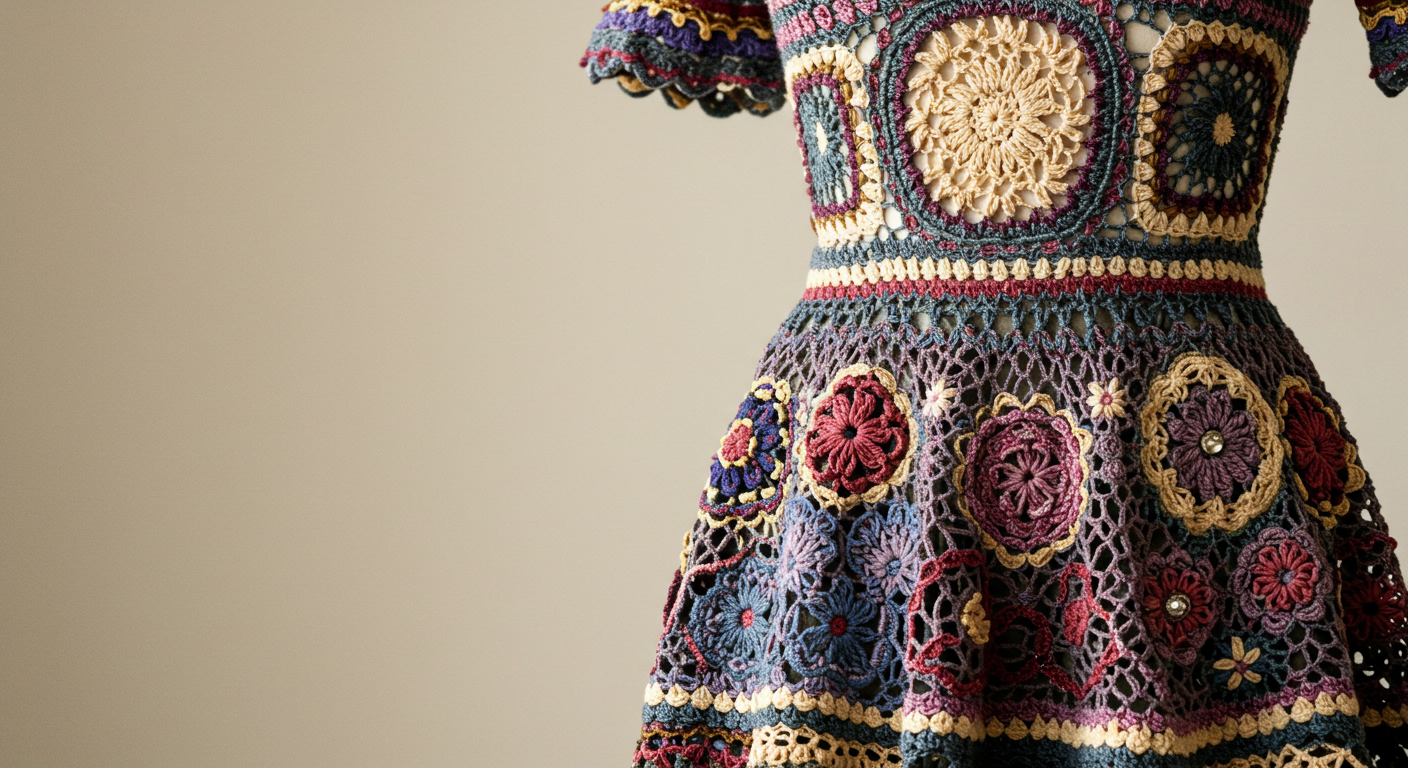
Taylor Swift has undoubtedly cemented her status as both a musical powerhouse and a fashion icon, with her style choices consistently capturing public attention. Among her most memorable fashion moments, her delicate crochet dress appearances stand out as particularly noteworthy. These outfits have not only sparked admiration from fans but also inspired crochet enthusiasts worldwide.
Interestingly, Taylor has incorporated crochet into various aspects of her wardrobe over the years. During her early career, she frequently opted for romantic, boho-chic designs that complemented her signature vintage aesthetic. Later, as her musical style evolved, so did her fashion choices, with crochet remaining a constant element in her looks.
Moreover, her Eras Tour costumes have taken crochet fashion to new heights. The intricate knit vests and folksy dresses she wears on stage perfectly mirror the nostalgic themes of her Folklore and Evermore albums. Similarly, her off-stage street style often features playful crochet pieces that showcase her ability to blend retro influences with modern trends.
Additionally, Taylor’s crochet looks have had a significant impact on fashion trends. Many fans have been inspired to recreate her outfits, leading to a resurgence in handmade fashion. Consequently, crochet patterns inspired by her style have become increasingly popular among crafters.
Furthermore, the sustainability aspect of crochet aligns perfectly with today’s eco-conscious fashion movement. Unlike fast fashion, handmade crochet pieces are durable and timeless, making them a smart choice for style-conscious individuals.
Ultimately, Taylor Swift’s crochet dresses demonstrate how classic craftsmanship can coexist with contemporary style. Whether she’s performing on stage or spotted out and about, her crochet looks consistently make a statement. As a result, she continues to influence both music and fashion, proving that handmade pieces can be just as glamorous as designer outfits.
In this article, we’ll explore:
- Taylor Swift’s most iconic crochet dress moments
- How to recreate her crochet dress style
- Free and paid crochet patterns inspired by her looks
- Why crochet fashion is making a comeback
- Tips for styling a crochet dress like Taylor
Taylor Swift’s Most Memorable Crochet Dress Outfits
1. The Boho-Chic White Crochet Dress (2010s Era)
During her Speak Now and Red eras, Taylor often embraced feminine, vintage-inspired fashion. One standout look was a white, lacy crochet dress paired with ankle boots and a flower crown, giving off a whimsical, festival-ready vibe.
Key Features:
- Flowy, knee-length silhouette
- Intricate floral crochet patterns
- Layered with a slip dress underneath
2. The Eras Tour’s Folklore-Inspired Crochet Vest Dress
For her Eras Tour, Taylor incorporated cottagecore aesthetics with a crochet vest dress reminiscent of her Folklore album’s woodsy, nostalgic themes.
Key Features:
- Oversized crochet knit vest
- Paired with a flowing cream dress
- Earthy, rustic tones
3. The Retro Granny Square Dress (2023 Street Style)
Taylor was spotted in a colorful granny square crochet dress, a nod to 1970s retro fashion. This look was a fun, playful twist on her usual romantic style.
Key Features:
- Bright, multicolored squares
- Fitted silhouette with puff sleeves
- Paired with vintage sunglasses
How to Crochet a Taylor Swift-Inspired Dress
Want to recreate Taylor’s crochet dress style? Here’s how to get started:
1. Choosing the Right Pattern
- For beginners: A simple A-line crochet dress with basic stitches (single/double crochet).
- Intermediate/Advanced: Try a lace crochet dress with intricate floral motifs.
- Free Patterns:
- Ravelry’s “Bohemian Crochet Dress” (similar to her white lace dress)
- Granny Square Dress Tutorial (YouTube, free step-by-step)
- Paid Patterns:
- Etsy’s “Taylor Swift Eras Tour Dress” (custom designs available)
2. Best Yarn for a Crochet Dress
- Cotton yarn (breathable, great for summer)
- Lightweight wool blend (for structure)
- Vintage-style thread yarn (for delicate lacework)
3. Stitch Techniques to Master
- Shell stitch (for a wavy, feminine hem)
- Filet crochet (for lace detailing)
- Granny squares (for a retro look)
Why Crochet Dresses Are Trending Again
Taylor Swift isn’t the only celebrity bringing crochet fashion back—here’s why it’s having a major revival:
1. Sustainable & Handmade Appeal
- Crochet is eco-friendly (less waste than fast fashion).
- Supports small businesses and artisans.
2. Vintage & Y2K Comeback
- The 70s boho and early 2000s crochet trends are resurging.
- Celebs like Hailey Bieber & Florence Pugh also wear crochet.
3. Perfect for Festival & Summer Fashion
- Breathable, lightweight, and Instagram-worthy!
How to Style a Crochet Dress Like Taylor Swift
1. Boho Romantic (Speak Now Era Vibes)
- Pair with: Ankle boots, layered necklaces, and a floppy hat.
- Hair: Loose waves or braids.
2. Cottagecore (Folklore Aesthetic)
- Layer with: A long slip dress and lace-up boots.
- Accessories: A woven bag and dainty gold jewelry.
3. Retro 70s (Granny Square Style)
- Wear with: Platform sandals and round sunglasses.
- Hair: Sleek middle part or voluminous curls.
Final Thoughts: Why Taylor’s Crochet Dress Style Is a Must-Try
Taylor Swift’s crochet dress moments beautifully demonstrate how handmade fashion can be both stylish and meaningful. Over the years, she has effortlessly incorporated crochet into her wardrobe, proving its versatility across different aesthetics. From breezy boho designs to cozy cottagecore looks, each outfit tells a story while making a sustainable fashion statement.
For starters, crochet offers endless creative possibilities. Beginners can experiment with simple stitches, while advanced crafters might tackle intricate lace patterns. Either way, the process allows for personalization, ensuring each piece feels special. Additionally, crochet aligns with slow fashion values, reducing waste compared to mass-produced clothing.
Moreover, Taylor’s crochet styles span multiple fashion eras. Her white lace dress from the early 2010s, for example, channels romantic boho vibes. Similarly, her Folklore-inspired ensembles highlight cottagecore charm with earthy tones and textured knits. Meanwhile, her recent granny square dress playfully nods to 70s retro trends.
Fortunately, recreating these looks is easier than it seems. Many free patterns exist online, from flowy summer dresses to fitted vests. When selecting materials, natural fibers like cotton work best for breathability and drape. Furthermore, styling options are limitless—pair with boots for a folksy feel or sandals for a carefree summer look.
Ultimately,
fashion inspires fans to embrace craftsmanship. Not only does handmade clothing carry sentimental value, but it also promotes eco-conscious choices. Whether you’re drawn to vintage charm or modern boho, crochet offers something for every Swiftie. So grab your hook and yarn, and let your creativity shine through!Want to start your own crochet dress? Check out the patterns mentioned and tag your creations #SwiftieCrochet!
-

 NEWS3 months ago
NEWS3 months agoPolitical News: Key Global and Domestic Updates
-
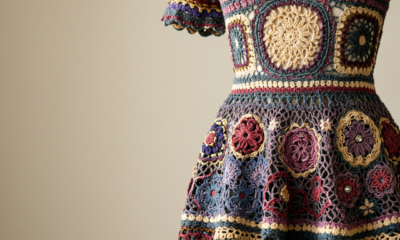
 ENTERTAINMENT2 months ago
ENTERTAINMENT2 months agoTaylor Swift Crochet Dress: A Fashion Icon’s Handmade Style
-

 TECHNOLOGY1 month ago
TECHNOLOGY1 month agoUnraveling Orinpendex: Mysteries and Potential
-

 TECHNOLOGY3 months ago
TECHNOLOGY3 months agoRSSAwee: Unlocking the Future of Digital Connectivity
-
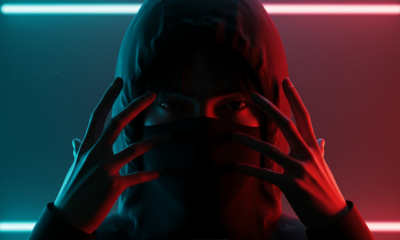
 TECHNOLOGY3 months ago
TECHNOLOGY3 months agoUnveiling iamnobody89757: The Enigma of Digital Identity
-

 TECHNOLOGY3 months ago
TECHNOLOGY3 months agoDGMNews.com: Revolutionizing Digital News in the Modern Era
-
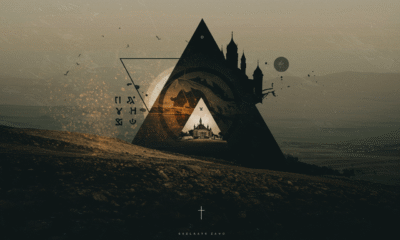
 BLOG1 month ago
BLOG1 month agoUnraveling Iszlágiya: A Deep Dive into Its Essence
-

 HEALTH2 months ago
HEALTH2 months agoAIOTechnical.com: Innovating Health & Beauty with Advanced Tech
